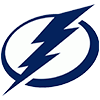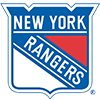I get it. After a long 162-game grind, for many the playoffs are a chance to kick back and watch some ball with only personal rooting interests in mind. However, for others, a playoff fantasy league is a means of redemption after a disappointing season. Plus, some simply enjoy having a little skin in the game.
I've been recruited to handle the site's playoff rankings this season, so I thought it fitting to review some playoff drafting strategies. Before delving in, here is how I'll approach the rankings, to be posted Tuesday morning. Playoff formats are almost exclusively points leagues. The problem is, scoring systems lack uniformity. That said, they're close enough to follow Jeff Erickson's lead from last season and provide ranks by position, then let you navigate your draft based on the league specifications. The initial rankings will encompass the wild-card games, then be updated once those games are completed Wednesday.
There are two general playoff league formats. The rankings will work for both styles.
The first is the way the National Fantasy Baseball Championship runs their postseason contest. Here, everyone is allowed to choose from the same inventory, but there are limits for the number of players allowed per team. The NFBC has an interesting twist where points increase for every round your players are alive. That is, points are scored normally (1x) in the Division Series, doubled (2x) in the Championship Series and tripled (3x) for the World Series. You're allowed to replace players who have
I get it. After a long 162-game grind, for many the playoffs are a chance to kick back and watch some ball with only personal rooting interests in mind. However, for others, a playoff fantasy league is a means of redemption after a disappointing season. Plus, some simply enjoy having a little skin in the game.
I've been recruited to handle the site's playoff rankings this season, so I thought it fitting to review some playoff drafting strategies. Before delving in, here is how I'll approach the rankings, to be posted Tuesday morning. Playoff formats are almost exclusively points leagues. The problem is, scoring systems lack uniformity. That said, they're close enough to follow Jeff Erickson's lead from last season and provide ranks by position, then let you navigate your draft based on the league specifications. The initial rankings will encompass the wild-card games, then be updated once those games are completed Wednesday.
There are two general playoff league formats. The rankings will work for both styles.
The first is the way the National Fantasy Baseball Championship runs their postseason contest. Here, everyone is allowed to choose from the same inventory, but there are limits for the number of players allowed per team. The NFBC has an interesting twist where points increase for every round your players are alive. That is, points are scored normally (1x) in the Division Series, doubled (2x) in the Championship Series and tripled (3x) for the World Series. You're allowed to replace players who have been eliminated, within roster limits and positional restrictions. The complete rules can be found HERE.
Most playoff leagues are simply a draft like a season-long league, with the caveat you lose roster spots as the batters and pitchers are eliminated from the postseason. Deciding which teams to favor is obviously a major component of draft strategy.
Let's start with ranking the teams in order of likelihood they win the World Series. This isn't necessarily the roadmap for drafting, but it provides a foundation from which to work. We all can come up with our own rankings, but there's a reason for the fancy hotels with pretty fountains and flashing lights in Las Vegas. Even accounting for how the primary aim of odds is to mitigate risk for the sportsbooks, they're a good indication of everyone's chances to win it all. If you're more analytically inclined, Fangraphs and Baseball Reference post updated playoff odds.
Having an idea of each club's odds helps shape strategies. It's more important in the standard draft format as opposed to the NFBC contest, since there are roster restrictions in that format. Specifically, in a draft, stacking a team is a common approach, with the notion being if you pick the right club, you'll keep racking up points from multiple players.
Here is where having an idea which teams will advance comes in handy. Chances are, you're not going to be able to stack most of the top guys on one of the top teams, since their best players will be selected early in the draft. Maybe you can catch a break and double or triple up on the lesser regulars, but if stacking is your plan, you'll have to identify the team and concentrate on their best players with your early picks.
Perhaps the most important element of any points format is understanding the relative potential of different types of players. The obvious is hitting versus pitching. However, within each, it's crucial to have a handle on how speed guys compare to power guys, or how much a high walk total affects points. With pitching, getting a feel for how closers compare to starters is important, though less so in short playoff series since saves will be even more of a crapshoot. Still, judging if a closer is better than, say, an SP3 helps guide the draft.
Keep in mind this will vary by scoring system, but the best approach is to download the final 2021 stats and calculate the points earned for every player. This doesn't serve as a means of ranking; it's solely to compare types of players. Where do the top arms rank relative to the top sticks? This will give you an idea whether the scoring favors batters or pitchers. Then check where someone like Whit Merrifield lands to gauge how the system values steals. Check where the top closers fall in relation to starters. All of this helps frames the potential of players relative to each other. Now it's just a matter of weaving in how many games you expect each guy to play, and how contrarian you want to be in your approach.
Scarcity is minimal in season-long leagues. However, there may be stronger and weaker positions in a reduced field. Again, there isn't a universal answer since scoring systems as well as player (and team) expectations differ.
Now it's just a matter of meshing your general approach with the rankings so you can best read the room during the draft. Of course, that's easier said than done.
This will end Part 1 of the series. Part 2 will be the rankings, with Part 3 sharing some general observations.




































